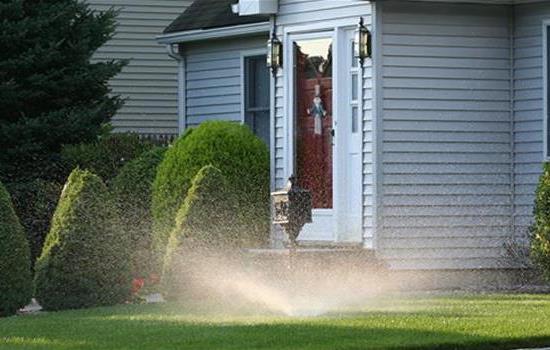Cross Connections
What is a cross connection?
A cross-connection is any temporary or permanent connection between a public water system or consumer's potable (i.e. drinking) water system and any source or system containing non-potable water or other substances. An example is the piping between a public water system or consumer's potable water system and an auxiliary water system, cooling system, or irrigation system. Explore our FAQ below to learn more.

Frequently Asked Questions (FAQ)
A cross connection is any temporary or permanent connection between a public water system or consumer's potable (i.e., drinking) water system and any source or system containing non-potable water or other substances. An example is the piping between a public water system or consumer's potable water system and an auxiliary water system, cooling system, or irrigation system.
Cross connections can occur at many points throughout a distribution system and a community's plumbing infrastructure. Cross connections can be identified by looking for physical interconnections (or arrangements) between a customer's plumbing and the water system. Some specific examples of backflow incidents that can occur are:
- Lawn chemicals backflowing (backsiphoning) through a garden hose into indoor plumbing and potentially into the distribution system.
- Backsiphonage of "blue water" from a toilet into a building's water supply.
- Carbonated water from a restaurant's soda dispenser entering a water system due to backpressure.
- Backsiphonage of chemicals from industrial buildings into distribution system mains.
- Backflow of boiler corrosion control chemicals into an office building's water supply.
Backflow is the undesirable reversal of flow of non-potable water or other substances through a cross-connection and into the piping of a public water system or consumer's potable water system.
There are two types of backflow:
- backpressure backflow
- backsiphonage
Backsiphonage is backflow caused by a negative pressure, such as a vacuum or partial vacuum, in a public water system or consumer's potable water system. The effect is like drinking water through a straw.
Backsiphonage can occur when there is a stoppage of water supply due to nearby firefighting, a break in a water main, etc.
Backpressure backflow is backflow caused by a downstream pressure that is greater than the upstream or supply pressure in a public water system or consumer's potable water system.
Backpressure can result from:
- an increase in downstream pressure
- created by pumps, temperature increases in boilers, etc.
- a reduction in the potable water supply pressure
- caused when the amount of water being used exceeds the amount of water being supplied, such as during water line flushing, firefighting, or breaks in water mains.
- a combination of both
A backflow preventer is a means or mechanism to prevent backflow:
- The basic means of preventing backflow is an air gap, which either eliminates a cross-connection or provides a barrier to backflow.
- The basic mechanism for preventing backflow is a mechanical backflow preventer, which provides a physical barrier to backflow. The principal types of mechanical backflow preventer are the reduced-pressure principle assembly, the pressure vacuum breaker assembly, and the double check valve assembly. A secondary type of mechanical backflow preventer is the residential dual check valve.
The responsibilities of an owner of a cross connection are defined in the Massachusetts Department of Environmental Protection’s Cross Connection Control Program Regulations - 310 CMR 22.22 (refer to mass.gov/doc/310-cmr-2222-cross-connection-regulations-0/download). Per 310 CMR 22.22 (4), the owner of any cross connection protected by a double check valve assembly or reduced pressure backflow preventer shall:
- (a) Notify the public water system of all cross connections protected by a double check valve assembly or reduced pressure backflow preventer and comply with all necessary approvals and permits from the public water system and/or the Department [MassDEP] for the maintenance of cross connections, as specified at 310 CMR 22.22;
- (b) Have suitable arrangements made so that inspections of backflow prevention devices and cross connection surveys can be made during regular business hours;
- (c) Maintain a spare parts kit and any special tools required for the removal and reassembly of backflow prevention devices;
- (d) Provide the necessary labor for inspection and testing by the Certified Backflow Prevention Device Testers or Certified Cross Connection Surveyor;
- (e) Overhaul, repair, or replace within 14 days of the initial inspection date and retest pursuant to 310 CMR 22.22(13)(e), any device which fails a test or is found defective;
- (f) Submit copies of the Inspection and Maintenance Report Form as required by the public water system.
- (g) Maintain on the premises complete records on all devices for the life of said devices including as-built plans and design data sheets; maintain for seven years the Inspection and Maintenance Report Forms for tests conducted by the certified.
- (h) Make certain that the cross connection protection device is tested as specified at 310 CMR 22.22(13) or as required by the public water system.
For Aquarion’s rules and regulations, including regarding Cross Connections, visit our Rules and Regulations page.
Water Quality
Safe, clean drinking water is essential to the health and well-being of each one of us as well as to society as a whole.
Learn More